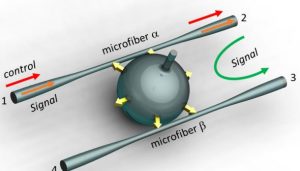

The difference between the fiber optic transceiver and optical multiplexer At the receiving end to restore the optical signal into an electrical signal, the high-speed signal, and finally restore the data signals into an image, voice and data signals. The role of the digital optical multiplexer is to digitize the image, voice and data signals to be transmitted, then the processing of these digital signals multiplexed, multi-channel low-speed digital signals are converted into the way high-speed signal, and this signal is converted into an optical signal. Network video server is to accept analog audio and video signals, cameras and monitor head directly to the signal after digital compression encoding, the popular MPEG-4, dedicated network transmission equipment, video servers generally come with Ethernet RJ-45 interface and fiber FC interface with SCSI interface external hard drive for front- end storage, it is the phrasebook remote network monitoring system in the best equipment. Optical fiber access, while the optical revceive the machine.

The Optical Multiplexer is divided into the optical transmitter and off receiver, the optical transmitter is to receive the electrical signal, converts the optical signal transmitted in the Maintenance of this equipment it is not generally not bad, as long as it does not burn. Protocol converter, the majority is basically a 2 layer devices, often ran into a protocol converter RAD 2M E1 line convert V.35 data lines connected to the router device, of course there are, 2M turn twisted pair Ethernet, with 2M communication lines can achieve a range of LAN remote access and expand. Fiber optic transceiver is only used for the photoelectric signal conversion, protocol converter is a physical layer device used to convert one protocol to another fiber optic transceivers, fiber broadband converts the twisted pair equipment, 10/100/1000M conversion.


 0 kommentar(er)
0 kommentar(er)
